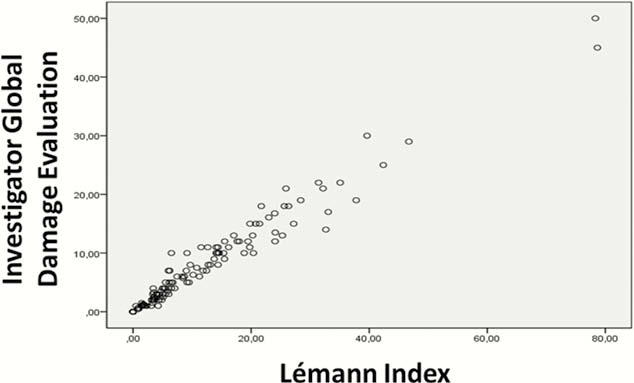OP05 Validation of the Lémann index in Crohn’s disease
B. Pariente1, J. Torres2, J. Burisch3, N. Arebi4, B. Barberio5, D. Duricova6, P. Ellul7, A. Goldis8, I. Kaimakliotis9, K. Katsanos10, Z. Krznaric11, D. Mc Namara12, N. Pedersen13, S. Sebastian14, P. Weimars15, P. Lung16, C. Lacognata17, M. Horak18, V. Domislovic11, I. Murphy12, R. Ungaro19, J.F. Colombel19, J.Y. Mary20
1Gastroenterology Department, CHRU Lille, Lille, France, 2Department of Gastroenterology, Hospital Beatriz Ângelo, Lisbona, Portugal, 3Department of Gastreonterology, Nordsjællands Hospital, Copenhagen, Denmark, 4Department of Gastroenterology, St. Marks Academic Institute, London, UK, 5Department of Gastroenterology, University of Padua, Padua, Italy, 6Department of Gastroenterology, Charles University, Prague, Czech Republic, 7Department of Gastroenterology, Brown Block Mater Dei, Msida, Malta, 8Department of Gastroenterology, Universitu of Timisoara, Timisoara, Romania, 9Department of Gastroenterology, Nicosia Private Practice, Nicosia, Cyprus, 10Department of Gastroenterology, Ioannina, Greece, 11Department of Gastroenterology, Zagreb, Croatia, 12Department of Gastroenterology, Dublin, Ireland, 13Department of Gastroenterology, Slagelse, Denmark, 14Department of Gastroenterology, Hull, London, UK, 15Department of Gastroenterology, Copenhagen, Denmark, 16Department of Gastroenterology, London, UK, 17Department of Gastroenterology, Padova, Italy, 18Department of Gastroenterology, Prague, Czech Republic, 19Department of Gastroenterology, Mount Sinai, New York, USA, 20Department of Gastroenterology, Saint Louis Hospital, Paris, France
Background
The Lémann index (LI) is the first instrument developed to measure cumulative structural bowel damage in Crohn’s disease (CD).1 We here report its validation.
Methods
This was an international, multicentre, prospective cross-sectional observational study. At each centre, 10 inclusions, stratified by known or suspected CD location and duration, were planned. Clinical examination and abdominal MRI had to be performed in all patients, and upper endoscopy, colonoscopy, and pelvic MRI according to CD location. Upper tract (UT), small bowel (SB), colon/rectum (CR), and anus (AN) were divided into 3, 20, 6 and 1 segments, respectively. History of previous surgery was collected per segment. For each segment, 1 gastroenterologist and 1 radiologist per centre, identified the presence of predefined stricturing and/or penetrating lesions of maximal severity (grade 1 to 3) at each investigation. They provided a damage evaluation for each non-resected segment ranging from 0 to 10, 10 corresponding to the damage of a completely resected segment. Investigator organ damage evaluation was calculated as the sum of segmental damage evaluations. Finally, investigators provided a global damage evaluation from 0 to 10 for each patient according to the 4 organ damage scores, calculated as a function of investigator organ damage evaluations, resections and a total number of segments. The correlation between the investigator global damage evaluation and the LI was high on the construction sample, since coefficients to derive the LI were estimated by maximising this correlation, and is expected to be lower on data obtained in new patients by new investigators. Thus, the LI would be validated if the linear regression model of investigator global damage evaluation on LI shows a still high correlation. The same applies to investigator damage evaluation of each organ and each organ component of the LI.
Results
134 patients were included in 15 centres, 7 to 10 per centre. Correlation coefficients between investigator organ damage evaluation and each organ component of the LI were 0.91, 0.96, 0.95, and 0.81, for UT, SB, CR and AN, respectively. The correlation coefficient between investigator global damage evaluation and the LI was 0.98 (Figure 1). Proportions of the investigator organ damage evaluation variance explained by each organ component of the LI were 82%, 91%, 89%, 65%, for UT, SB, CR, AN, respectively. This proportion was 96% for the investigator global damage evaluation and the LI.

Conclusion
The Lémann index is now a validated index to assess cumulative bowel damage in CD that can be used in epidemiological studies and disease modification trials.
Pariente B


